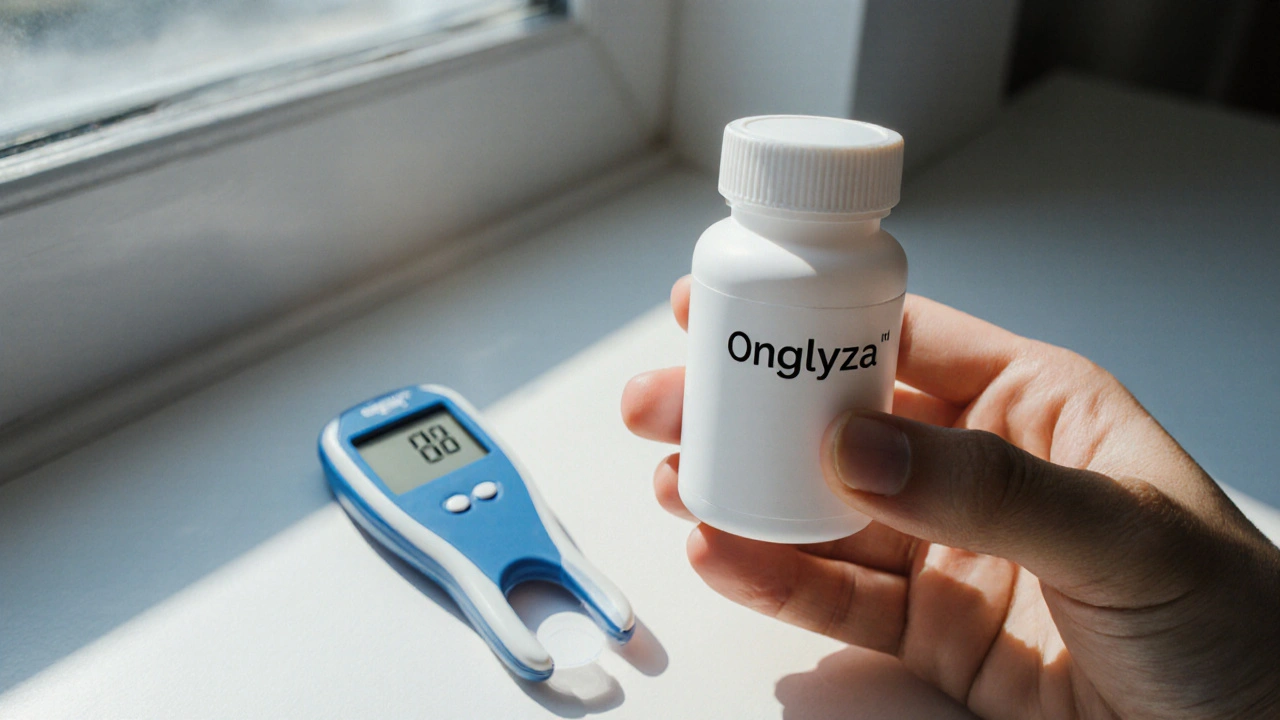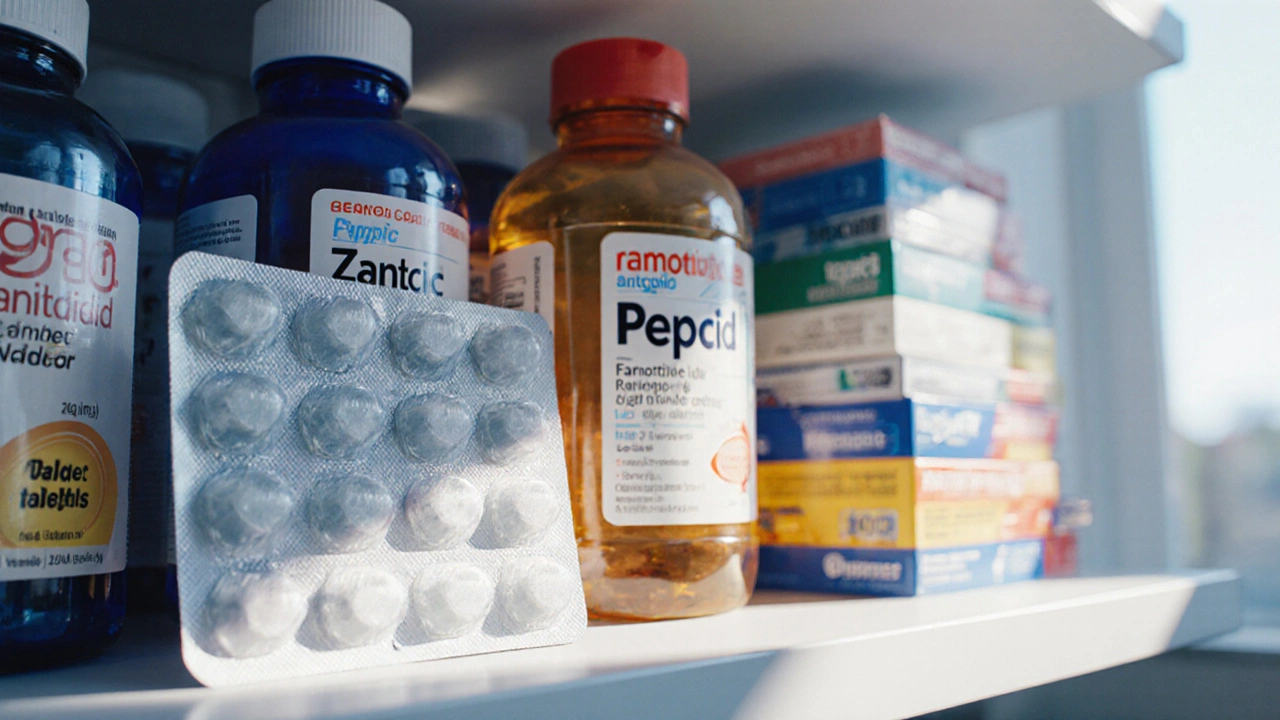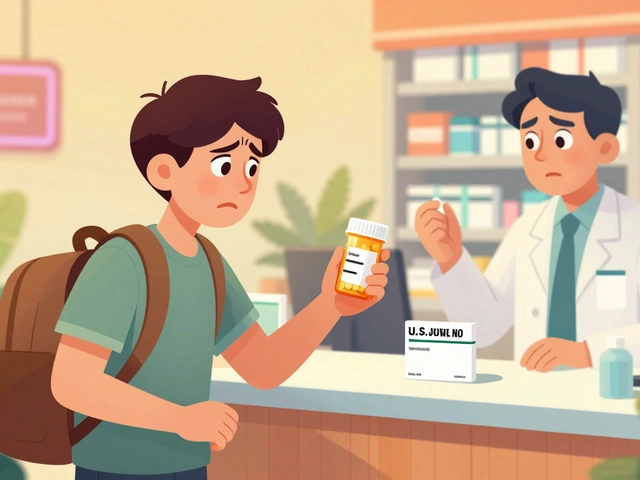Onglyza vs. Other Diabetes Drugs Comparison Tool
This tool compares major diabetes medications based on effectiveness, safety, and cost. Select a drug to see detailed information.
Onglyza
DPP-4 Inhibitor
Januvia
DPP-4 Inhibitor
Tradjenta
DPP-4 Inhibitor
Jardiance
SGLT2 Inhibitor
Ozempic
GLP-1 Agonist
Metformin
Biguanide
If you’ve been prescribed a pill to lower blood sugar, chances are you’ve heard the name Onglyza. It’s a popular DPP‑4 inhibitor, but the market is crowded with other options that promise similar or even better results. This guide walks through how Onglyza stacks up against its main rivals, focusing on efficacy, heart safety, kidney handling, cost, and day‑to‑day practicality. By the end you’ll know which drug fits your lifestyle and health profile.
Key Takeaways
- Onglyza reduces HbA1c by about 0.6‑0.8% and is weight‑neutral.
- Januvia and Tradjenta offer similar glucose‑lowering power but differ in renal dosing.
- GLP‑1 agonists such as Ozempic provide weight loss and proven cardiovascular benefit, at a higher price.
- SGLT2 inhibitors (e.g., Jardiance) cut glucose and improve heart‑kidney outcomes, but risk urinary infections.
- Cost and insurance coverage vary widely in Australia; metformin remains the cheapest first‑line option.
What is Onglyza (Saxagliptin)?
Onglyza is a DPP‑4 inhibitor that works by blocking the enzyme dipeptidyl‑peptidase‑4, thereby increasing levels of incretin hormones (GLP‑1 and GIP). These hormones boost insulin release after meals and suppress glucagon, leading to lower blood glucose. The drug comes in a 5mg tablet taken once daily, with or without food. It was approved in Australia in 2015 and is prescribed mainly for type2 diabetes when metformin alone isn’t enough.

Major Alternatives at a Glance
Other DPP‑4 inhibitors share the same mechanism but differ in dosage flexibility, renal safety, and cost. Below are the most common choices:
Januvia (Sitagliptin) is taken as a 100mg tablet once daily. It has a well‑established cardiovascular safety profile and requires dose reduction only when eGFR falls below 30ml/min.
Tradjenta (Linagliptin) is unique because it does not need renal dose adjustment at all, making it a go‑to for patients with chronic kidney disease.
Galvus (Vildagliptin) is usually prescribed as a 50mg tablet taken twice daily. It offers comparable HbA1c reduction but may cause mild elevations in pancreatic enzymes.
Metformin is the first‑line oral agent for type2 diabetes. It works by reducing hepatic glucose production and improving insulin sensitivity. The typical dose is 500‑1000mg twice daily, with a maximum of 2g per day.
Jardiance (Empagliflozin) belongs to the SGLT2‑inhibitor class. Taken as a 10mg tablet once daily, it lowers blood sugar by increasing urinary glucose excretion and also cuts cardiovascular risk.
Ozempic (Semaglutide) is a GLP‑1 receptor agonist administered via weekly sub‑cutaneous injection. It delivers 1‑1.5mg doses, driving significant weight loss and proven heart‑benefit.
Side‑by‑Side Comparison
| Drug | Class | Typical HbA1c ↓ | Weight Effect | Cardiovascular Outcome | Renal dosing | Monthly cost (AUD) |
|---|---|---|---|---|---|---|
| Onglyza | DPP‑4 inhibitor | 0.6‑0.8% | Neutral | Neutral (no proven benefit) | Reduce to 2.5mg if eGFR<50ml/min | $80 |
| Januvia | DPP‑4 inhibitor | 0.7‑0.9% | Neutral | Neutral | Half dose if eGFR<30ml/min | $85 |
| Tradjenta | DPP‑4 inhibitor | 0.7‑0.9% | Neutral | Neutral | No adjustment needed | $90 |
| Metformin | Biguanide | 1‑1.5% | Neutral or slight loss | Neutral | Reduce dose if eGFR<30ml/min | $20 |
| Jardiance | SGLT2 inhibitor | 0.5‑0.7% | Modest loss (2‑3kg) | Reduced CV death & HF hospitalization | Not recommended if eGFR<45ml/min | $110 |
| Ozempic | GLP‑1 receptor agonist | 1‑1.3% | Loss of 4‑6kg | Strong CV benefit (MACE reduction) | No renal dose change | $150 |
How to Choose the Right Option
Pick a drug based on the factors that matter most to you. Below is a quick decision‑tree you can follow:
- Do you need cardiovascular protection? If yes, consider GLP‑1 agonists (Ozempic) or SGLT2 inhibitors (Jardiance) first.
- Is kidney function a concern? For eGFR<30ml/min, Tradjenta is the only DPP‑4 inhibitor that stays at the same dose; Onglyza and Januvia require reductions.
- Is cost a barrier? Metformin and generic DPP‑4 inhibitors like Onglyza are the most affordable. Check your private health fund or PBS listing.
- Do you want a simple oral regimen? DPP‑4 inhibitors and metformin are once‑daily pills. GLP‑1 agonists require injections, which may be inconvenient for some.
- Are weight changes important? GLP‑1 agonists and SGLT2 inhibitors promote weight loss, while DPP‑4 inhibitors and metformin are weight‑neutral.
Talk to your endocrinologist or pharmacist about your personal risk profile. They can run a quick lab check (HbA1c, eGFR, liver enzymes) and match you with the drug that balances effectiveness, safety, and affordability.
Practical Tips for Taking DPP‑4 Inhibitors
- Take the tablet with or without food; consistency helps keep blood levels steady.
- If you miss a dose, take it as soon as you remember, unless it’s close to the next scheduled dose.
- Monitor blood glucose regularly for the first two weeks after a switch; small adjustments may be needed.
- Watch for signs of pancreatitis (severe abdominal pain, nausea) and report them immediately.
- Stay hydrated, especially if you combine a DPP‑4 inhibitor with an SGLT2 inhibitor, to reduce the risk of kidney stones.
Frequently Asked Questions
How fast does Onglyza start lowering blood sugar?
Most patients notice a modest drop in fasting glucose within 1‑2 weeks, with full HbA1c effect after about 12 weeks.
Can I use Onglyza with insulin?
Yes. DPP‑4 inhibitors are often added to basal insulin to fine‑tune post‑prandial spikes, but dose adjustments of insulin may be needed to avoid hypoglycemia.
Is there a risk of low blood sugar with Onglyza?
On its own, Onglyza has a very low hypoglycemia risk because it only works when glucose is high. The risk rises if you’re also on sulfonylureas or insulin.
Why might my doctor choose Tradjenta over Onglyza?
Tradjenta doesn’t need renal dose adjustments, making it safer for patients with chronic kidney disease. It also has a slightly lower incidence of urinary tract infections.
Are there any long‑term safety concerns with DPP‑4 inhibitors?
Large cardiovascular outcome trials have shown neutral heart risk. Rare cases of severe joint pain and pancreatitis have been reported, so ongoing monitoring is advised.





Sarah Arnold on 7 October 2025, AT 16:36 PM
If you’re weighing Onglyza against the other options, here’s the quick rundown: it drops HbA1c by about 0.6‑0.8% and won’t make you gain weight 🚀. Compared to Januvia, the efficacy is pretty much the same, but the dosing for kidney trouble is a tad stricter. Cost‑wise, you’re looking at $40‑$60 AUD a month, which sits in the middle of the DPP‑4 crowd. Cardiovascular outcomes are neutral, so don’t expect the heart‑protective perks you get from Jardiance or Ozempic. If you need a simple pill with once‑daily dosing, Onglyza checks the box. Just remember to adjust the dose if your eGFR falls below 30 ml/min 🙌.